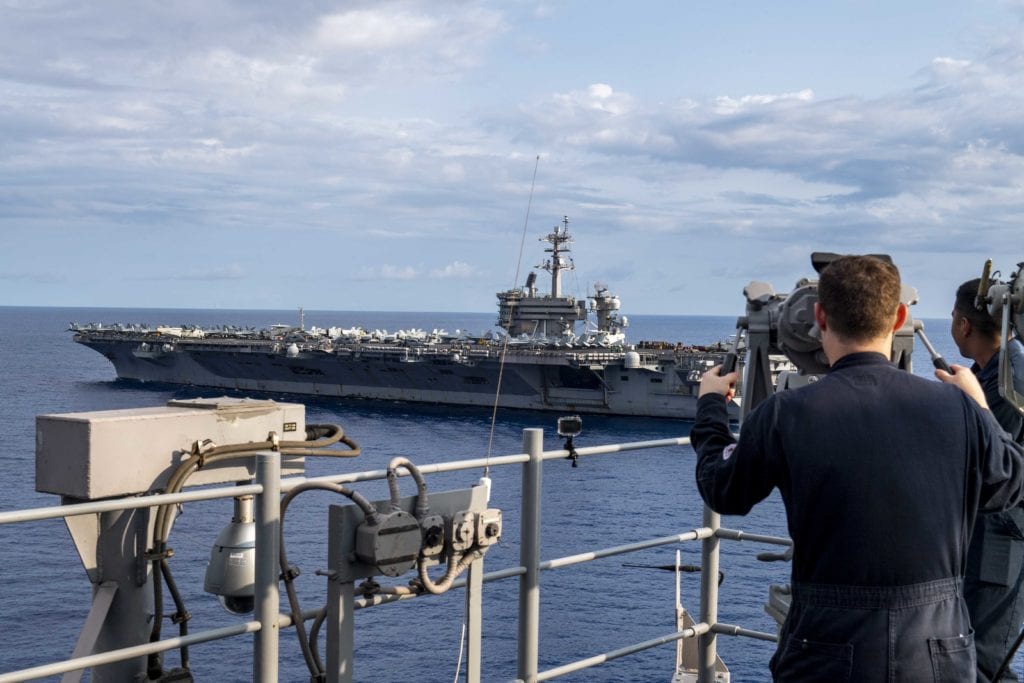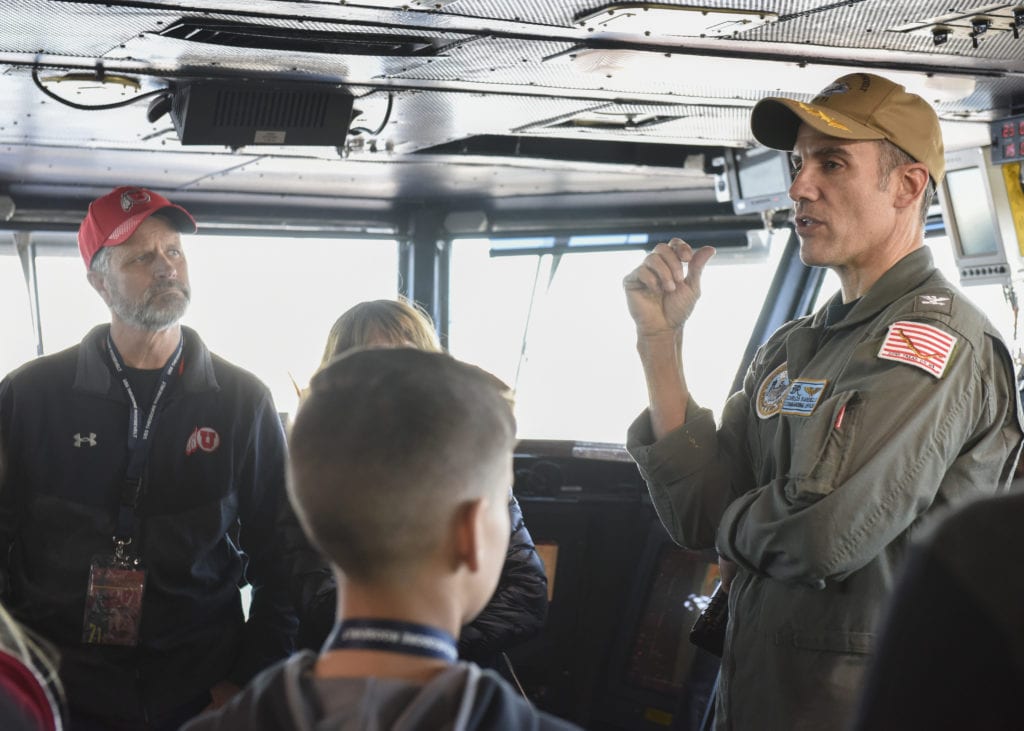
ARLINGTON, Va. — The most recent former commander of the USS Theodore Roosevelt will replace the aircraft carrier’s ousted skipper, Capt. Brett Crozier, who was dismissed April 2 after his plea to the U.S. Navy for more help dealing with a shipboard coronavirus outbreak went public.
Rear Adm. Select Carlos Sardiello, who commanded the Teddy Roosevelt from July 2017 until last November, will replace the man who took over from him just five months ago — as soon as Sardiello can reach Guam, where the carrier is docked.
Until that time, Capt. Dan Keeler, the carrier’s executive officer, is in command. Several videos posted on social media on April 3 show large crowds of Theodore Roosevelt personnel cheering for Crozier as he departs down the carrier’s gangway alone. Thousands of the TR’s 4,900 personnel have been offloaded, isolated and tested on Guam to counter the spread of the novel coronavirus, COVID-19.

Sardiello “is extremely well-acquainted with the ship, many members of its crew and the operations and capabilities of the ship itself,” acting Navy Secretary Thomas Modly told an April 2 press briefing where he announced Crozier’s removal. Sardiello “is the best person in the Navy right now to take command under these circumstances,” Modly said.
A few days after three of the TR’s sailors tested positive for COVID-19 and were evacuated by air, the carrier made a scheduled port visit at Guam, where the number testing positive grew to more than 100. Most of those Sailors have minor or no symptoms and none have been hospitalized.
In a four-page March 30 letter to Navy leadership, Crozier said that the TR had inadequate space to isolate or quarantine Sailors in keeping with guidance from the U.S. Centers for Disease Control and Prevention and the Navy. “The spread of the disease is ongoing and accelerating,” Crozier wrote. He called for disembarking all but a token force of about 10% of the crew until all could be tested for infection, isolated for the required 14 days and the ship sanitized. The letter was leaked to the San Francisco Chronicle, which published it on March 31.
At a Pentagon press briefing the following day, Modly said he was “disappointed” to hear of Crozier’s remarks but avoided saying whether the captain would be fired for going outside normal channels to draw attention to his ship’s plight. “We need a lot of transparency in this situation, and we need that information to flow up through the chain of command,” Modly said.
However, at the April 2 briefing, also attended by Chief of Naval Operations Adm. Mike Gilday, Modly said he was ordering Crozier removed from his command because he had “lost confidence in [Crozier’s] ability to lead” the Roosevelt during the virus outbreak. Before Crozier’s letter was published, Navy leadership had been in touch with the captain, Modly said. Crozier said he wanted his crew evacuated from the carrier faster but did not relay “the various levels of alarm that I, along with the rest of the world, learned from his letter when it was published,” Modly said.
Crozier “had allowed the complexity of his challenge with the COVID breakout on the ship to overwhelm his ability to act professionally, when acting professionally was what was needed most.”
Acting Navy Secretary Thomas Modly
Nor had Crozier discussed the situation with his immediate superior, the carrier strike group’s commander, Rear Adm. Stuart Baker, who was on board the TR “right down the passageway from him,” Modly said. The secretary also complained that Crozier had not encrypted the letter, which was sent over nonsecure, unclassified e-mail outside the chain of command that raised questions about the operational capabilities and security of the aircraft carrier.
After discussions in person and by teleconference with Gilday, the commanders of the U.S. Pacific Fleet, the 7th Fleet, Navy Surgeon General Rear Adm. Bruce Gillingham and others, Modly said he concluded Crozier “had allowed the complexity of his challenge with the COVID breakout on the ship to overwhelm his ability to act professionally, when acting professionally was what was needed most.”
Moldy said Gilday has directed Vice Chief of Naval Operations Adm. Robert Burke to investigate the circumstances and climate of the entire Pacific Fleet “to help determine what may have contributed to this breakdown in the chain of command.”
- Shall We Play a Game? Winning Isn’t the Point, Experts Say - April 5, 2023
- U.S. Goal: Maintaining Extended Presence in Arctic’s Harsh Environment - April 4, 2023
- Joint, Combined Exercise Shows Marine Littoral Regiment Idea is on ”Right Track’ - February 24, 2023






